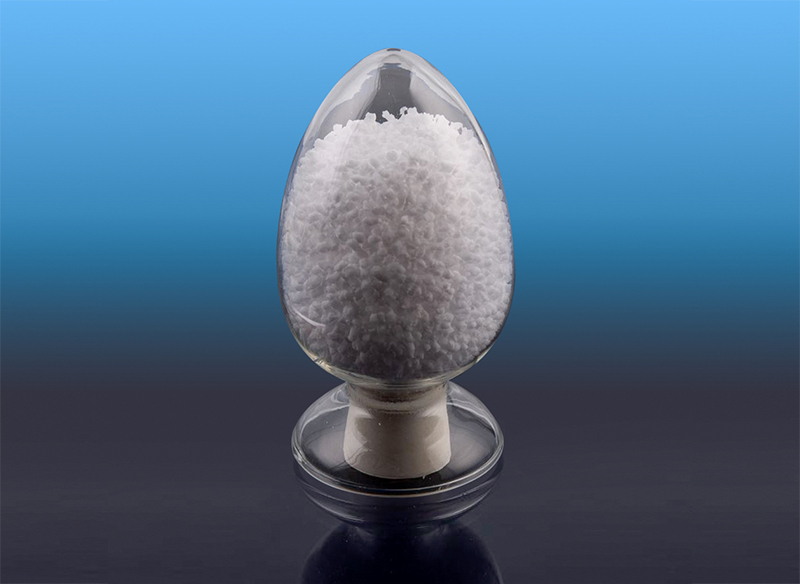Styrene-Butadiene Block Copolymers (SBCs): Molecular Architecture, Performance Tailoring, and Next-Generation Applications
Styrene-butadiene block copolymers (SBCs) exemplify the synergy of precision polymer chemistry and industrial functionality, serving as cornerstone materials in adhesives, thermoplastic elastomers (TPEs), and high-performance composites. This article delves into the molecular engineering principles, advanced polymerization techniques, and emerging application landscapes that define modern SBC technologies, while addressing challenges in thermal stability, recyclability, and multifunctional performance optimization.
1. Molecular Design and Phase-Separated Morphology
The unique properties of SBCs stem from their nanoscale microphase separation, where polystyrene (PS) hard domains act as physical crosslinks within a polybutadiene (PB) soft matrix. Key structural parameters include:
-
Block Sequence Architecture:
-
Linear triblock (SBS, SIS) vs. radial (star) configurations (e.g., (SB)ₙR), influencing tensile strength (5–25 MPa) and elongation (>500%).
-
Asymmetric block ratios (e.g., 30:70 styrene:butadiene) for tailored glass transition temperatures (Tg: -80°C to +100°C).
-
-
Domain Size Control: 10–50 nm PS domains via controlled polymerization kinetics, optimizing stress transfer in dynamic loading.
Advanced modifications:
-
Hydrogenated SBCs (SEBS/SEPS): Catalytic saturation of PB blocks enhances UV/thermal stability (service temperature up to 135°C).
-
Functionalized Terminal Groups: Epoxy, maleic anhydride, or silane moieties enabling covalent bonding in nanocomposites.
2. Precision Polymerization Methodologies
SBC synthesis leverages living polymerization techniques to achieve narrow molecular weight distributions (Đ <1.2):
-
Anionic Polymerization:
-
Alkyllithium initiators (e.g., sec-BuLi) in cyclohexane/THF at -30°C to 50°C.
-
Sequential monomer addition for block fidelity (>98% styrene incorporation efficiency).
-
-
RAFT/NMP Controlled Radical Polymerization:
-
Enables incorporation of polar comonomers (e.g., acrylic acid) for water-dispersible adhesives.
-
Achieves >150 kg/mol molecular weights with precise mid-block functionalization.
-
Innovative process technologies:
-
Continuous Flow Reactors: 30% reduction in cycle time vs. batch systems, with real-time FTIR monitoring for chain length control.
-
Solvent-Free Reactive Extrusion: Twin-screw compounding with in-situ styrene-butadiene grafting (>85% conversion).

3. Structure-Property Relationships and Performance Enhancement
SBC performance is engineered through molecular and additive interventions:
-
Reinforcement Strategies:
-
Silica nanoparticle inclusion (20–40 phr) boosting tear strength by 300% (ASTM D624).
-
Graphene nanoplatelet alignment via extensional flow, achieving 10⁻⁶ S/cm electrical conductivity.
-
-
Dynamic Crosslinking:
-
Diels-Alder reversible networks enabling self-healing at 90°C (>95% recovery efficiency).
-
Ionic supramolecular interactions (e.g., Zn²⁺ carboxylate) for strain-induced stiffening.
-
-
Thermal Stabilization:
-
Hindered phenol/phosphite synergists extending oxidative induction time (OIT) to >60 min at 180°C (ISO 11357).
-
Layered double hydroxide (LDH) nanofillers reducing heat release rate by 40% (UL 94 V-0 compliance).
-
4. Advanced Applications and Case Studies
A. Adhesive Technologies
-
Hot-Melt Pressure-Sensitive Adhesives (HMPSAs):
-
SIS-based formulations with >20 N/25mm peel strength (FINAT FTM 1) and -40°C flexibility.
-
Case Study: 3M’s SBC/acrylic hybrid tapes for automotive emblems, withstanding 160°C e-coat ovens.
-
-
Structural Bonding:
-
Epoxy-functionalized SEBS adhesives achieving 15 MPa lap shear strength on CFRP (ASTM D1002).
-
B. Automotive & Industrial Components
-
TPE Overmolding:
-
SEBS/PP blends (Shore A 50–90) for vibration-damping engine mounts (>10⁷ fatigue cycles, ISO 6943).
-
Conductive grades (10⁻³ S/cm) for EMI-shielded EV battery housings.
-
-
Oil-Resistant Gaskets:
-
Hydrogenated nitrile-SBS composites maintaining elasticity after 500h ASTM No. 3 oil immersion.
-
C. Biomedical Innovations
-
Thermoplastic Polyurethane (TPU) Hybrids:
-
SBC/TPU blends with >300% elongation and ISO 10993-5 cytotoxicity compliance for catheter tubing.
-
Shape-memory stents recovering original geometry at body temperature (Tswitch ≈37°C).
-
5. Sustainability and Circular Economy Drivers
The SBC industry is addressing environmental imperatives through:
-
Bio-Based Monomers:
-
Fermentation-derived styrene (>30% bio-content) and bio-butadiene from ethanol dehydration.
-
Lignin-grafted SBCs for UV-stable outdoor applications.
-
-
Chemical Recycling Pathways:
-
Pyrolysis at 450°C yielding >80% styrene/butadiene monomers (purity >99%).
-
Enzymatic depolymerization using lipases for selective block cleavage.
-
-
Re-processable Vitrimers:
-
Transesterification-enabled SBC networks allowing infinite thermal reshaping without property loss.
-
6. Emerging Frontiers and Smart Material Integration
-
4D-Printable SBCs:
-
Light-responsive azobenzene segments enabling shape morphing under 450 nm illumination.
-
Humidity-actuated SBC/PNIPAM composites for adaptive building facades.
-
-
Energy Harvesting Elastomers:
-
Piezoelectric SBC/BaTiO₃ nanocomposites generating 5 V/cm² under cyclic compression.
-
-
AI-Driven Formulation Design:
-
Machine learning models predicting phase diagrams from monomer reactivity ratios (r₁, r₂).
-
Market analysts (Grand View Research, 2024) project a 6.5% CAGR for SBCs through 2032, driven by EV lightweighting and smart packaging demands.





